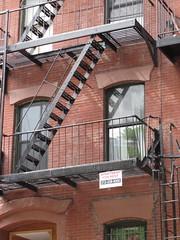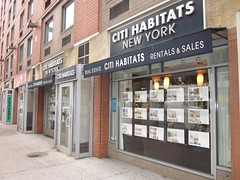When scouring apartment listings, it always seems like that time — that particular time when you decided to move — was the worst possible choice because there are so few apartments available. For those searching now, they’re not just imagining it.
The percentage of available apartments in Manhattan this May hit its lowest rate in the past five years. With every neighborhood differing slightly, the East Village average was 0.69 percent — the same as the city wide average — and the overall city vacancy rate decreasing by 0.25 percent from the month prior.
According to StreetEasy, a real estate comparison website, the overall amount of rental apartments in Manhattan is down by 18 percent from this time last year.
“Rental inventory is tight everywhere right now. It’s the season: May, June, and July are the peak months for rental,” said Sofia Song, vice president of research at StreetEasy.
The East Village is known largely in the real estate world for being filled with college students and recent grads (along with the artists and musicians who shaped the area’s identity), and while they do still make up a sizable amount of the market, there are other groups interested in the area.
“The East Village as a whole is drawing a more moneyed crowd than it would have 10 years ago or 20 years ago. It used to be an area where almost everyone that rented here used to be college aged or young professionals but now there are more and more families as well as well-heeled individuals,” said Robert Perl, president of East Village-based realty firm Tower Brokerage. “Let’s just say we’ve had nannies in the neighborhood for at least a decade.”
Along with the decrease in availability, rental prices have promptly increased. Ms. Song said that the average apartment in the East Village has increased by at least $100 per month.
This means that switching apartments will be costlier, not just in sticker price but also in the lack of incentives that were doled out like candy when the market was down in 2009. Landlords, hoping to simply fill their apartments no matter what, were at points offering multiple months free rent to new tenants and agreeing to pay their broker fees, which can often times be up to 15 percent of a year’s rent. Real estate firm Citi Habitats says that at the market’s low point in 2009, 60 percent of all new rentals in Manhattan included a concession, standing in stark contrast to the 8 percent of transactions that did so in May of this year.
“People aren’t used to not getting concessions now,” said Ryan Edgette, an agent with Citi Habitats. “When you first meet with someone, they all have unrealistic expectations because last year they got a great deal or their friend got a great deal.”
The only apartments in the East Village where the prices dropped since last year is for apartments with more than three bedrooms, where the average price dropped from $4,875 per month to $4,400.
“It could be a couple of things: people who are in the studios and one bedrooms are staying put, or the people in the two to three bedrooms are moving out, so that could explain the increase in inventory,” Ms. Song said.
Mr. Perl, who has worked in East Village real estate for more than 20 years, thinks that while the low vacancy rate and improved market conditions are both good signs for the economy, the neighborhood is making its own luck.
“I think that market conditions can fluctuate, but even in bad years the area continues to undergo gentrification which essentially means more people are willing to come and continue to spend money,” Mr. Perl said.
“There are more and more luxury units here, so there is higher end product, so rents are rising in part not due just to rent conditions but also due to an increased supply in higher quality apartments,” he added.





